|
|
DIVISION OF FRACTIONS |





















 |
Division of fractions can be shown to be a comparison of
one fraction to another. The solution process can be directed by
continuing our poem.
I invited my friend again for pie.
Have no fear this is why;
I baked this time two with pride.
I ate most of one but no need to cry.
Here's another for my friend to try.
Eat my friend; do not be shy.
|
 |
|
 |
|
Place Mouse Arrow Over Pictures To
See Animation |
| Have the students, as for multiplication of fractions, multiply the denominators to see into how
many equal pieces the pie is sliced, but position the quadrilateral of
beads between the separated triangles. Push 3 bottom beads against the left post to represent the denominator of 2/3. Next push 4 more bottom beads midway to the left post, then back to the right almost touching the array remaining against the right post to represent the denominator of 3/4. There will be a quadrilateral array of 12 brown beads left in the middle. |
|
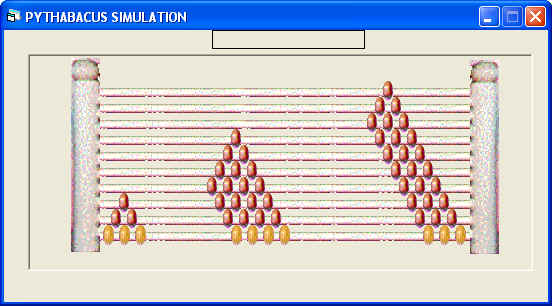 |
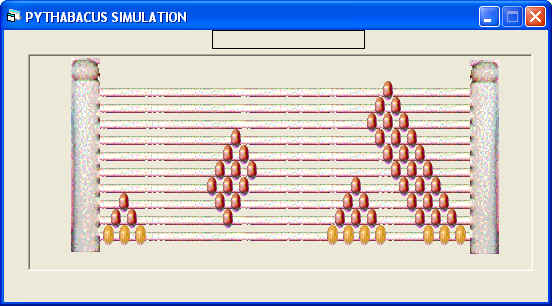 |
| Next have
students multiply the second fraction times twelve, the product of the
denominators to find the denominator of the solution. First, to represent the numerator of
3/4 push 3 of the 4 bottom beads of the 3/4 array to the left, against the 3 beads of the 2/3 array
by the left post. Push these 3 beads back to the right to rejoin the 1 remaining to the right. A quadrilateral of 9 brown beads will remain touching the triangle above the 3 beads
by the left post. This fraction of beads is represented to students as the slices
eaten of the first pie and is the denominator of the solution fraction.
Have students write it under the solution fraction bar |
|
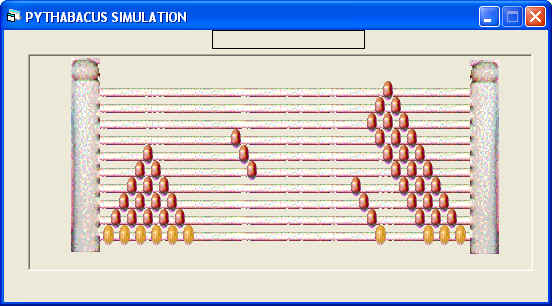 |
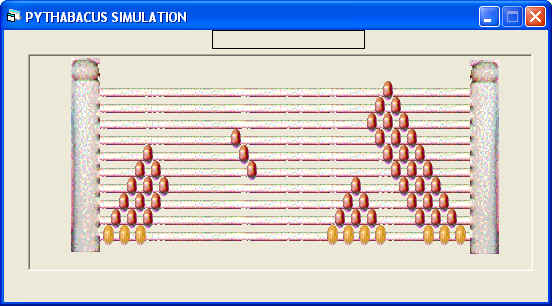 |
| Now have students
multiply the first fraction times twelve, the product of the denominators
and slices in a whole pie. To represent the numerator of 2/3 push 2 of the 3 bottom beads,
by the left post, to the right until they touch the 4 beads of 3/4. When you push these 2 beads back to the left 8 brown beads will remain touching the triangle above the 4 beads of the 3/4 array representing the numerator of the
solution. This fraction of beads is represented to the students as the
slices eaten of the second pie by the friend and is the numerator of the
solution fraction. Have student write it over the solution fraction
bar. Therefore 2/3 | 3/4 = 8/9. |
|
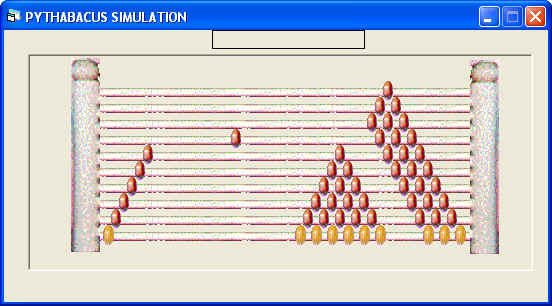 |
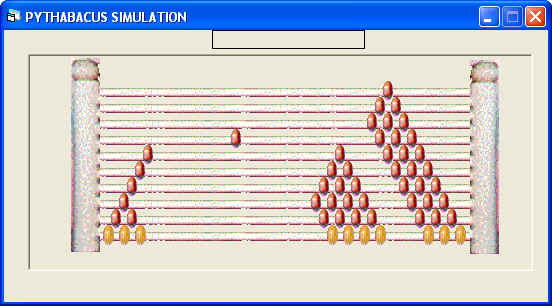
|
| This process shows to the students that a part (two-thirds) of a
whole, the second pie, is compared to a part (three-fourths) of a whole,
the first pie to find the answer when dividing fractions. As for
multiplication, after solving a number of division problems on the Pythabacus
students may be guided to discover the numerical rule for dividing
fractions. |

|


![]()




